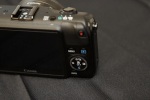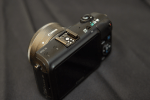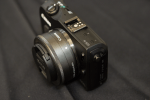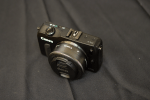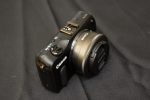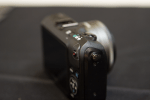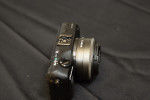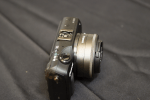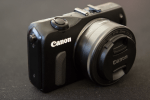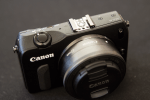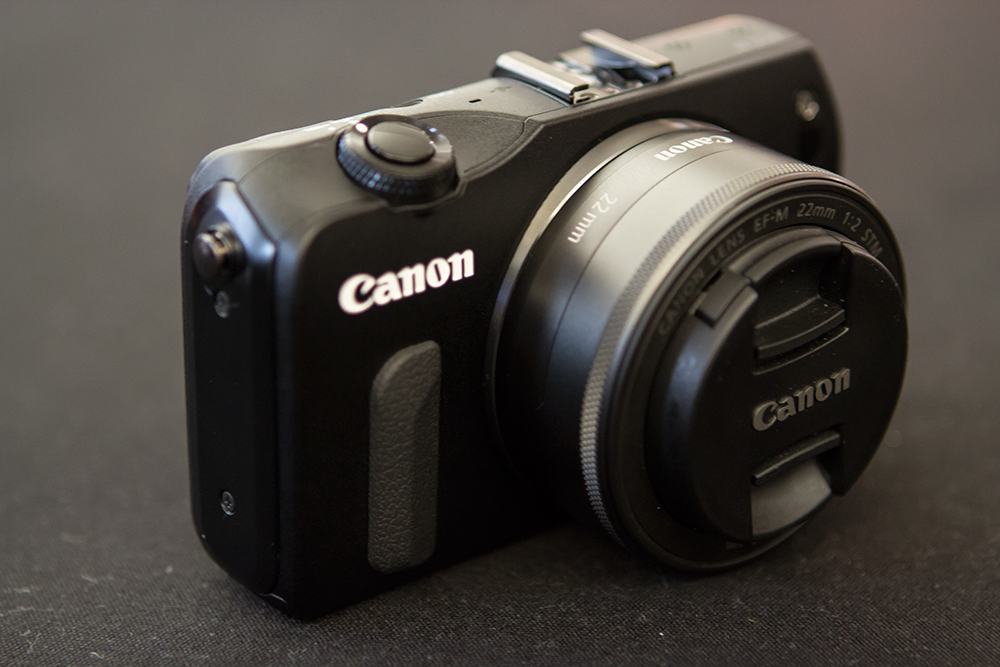 Canon waited quite a while to get into the mirrorless interchangeable lens camera (MILC) market, biding its time as competitors like Olympus, Panasonic and Sony built up strong reputations for their own small, slim mirrorless designs. But earlier this year, it introduced the EOS M, its first MILC offering. That camera should hit store shelves by the end of this month, but I got to take it for a brief test drive at an event last night ahead of this week’s PhotoPlus conference in New York.
Canon waited quite a while to get into the mirrorless interchangeable lens camera (MILC) market, biding its time as competitors like Olympus, Panasonic and Sony built up strong reputations for their own small, slim mirrorless designs. But earlier this year, it introduced the EOS M, its first MILC offering. That camera should hit store shelves by the end of this month, but I got to take it for a brief test drive at an event last night ahead of this week’s PhotoPlus conference in New York.
The EOS M is a surprisingly small camera. It probably seemed even more so because I was using it initially with Canon’s 24-70mm f/2.8 L lens attached via the official adapter ring (which brings with it full autofocus functionality by the way), but with the EF-M 22mm f/2 kit lens attached it’s actually pretty pocketable. It reminds me a lot of a bulkier PowerShot S100, right down to the very nice feeling matte magnesium alloy body. Also, I noticed that the 22mm lens is actually a very dark shade of grey, whereas the body is black. That’s on purpose, a Canon rep told me, and meant to ensure the lens complements both the white and black EOS M body.
One thing about the EOS M that immediately takes a little getting used to is the lack of physical controls, especially if you’re coming from a Canon DSLR. Much of the camera’s settings are managed via its capacitive touchscreen, which is incredibly responsive and provides convenient access to Canon’s well-designed software menu system. That said, pros will find themselves missing all the dials and buttons of their DSLR rigs, and advanced consumers might long for the lens-based control ring of the PowerShot S100 and new S110, but that’s not an issue of the EOS M’s design, it’s the result of design compromises needed to provide a MILC camera that’s uncluttered yet also small enough to be truly portable. Plus, using the touchscreen to review images, with its pinch-to-zoom features, is a much better experience than I’ve had in the past with non-touch digital cameras.
We were working with a professionally lit display space when taking photos at this event, and that means you had a lot of different lighting conditions, but all designed to benefit photographs. And I found that the EOS M did take great pictures with its 18MP APS-C sensor (it shares both this and its touchscreen display with the Rebel T4i), but the camera took a while to find focus in all cases. With autofocus, whether you’re using face detection or tap-to-focus on the touchscreen, the EOS M hunts for a while before settling in – the sensor-based AF just can’t keep up with DSLRs. If you’re looking for a comparable experience, imagine shooting only in live view mode on the T3i or T4i, using the default autofocus settings.
The EOS M’s autofocus system is more geared towards shooting video, and in that capacity combined with the STM kit lens, it works very well. Though I can’t speak to final output quality based on my experience, shooting video was a very good experiences with Canon’s MILC.
Finally, while I didn’t get too much time with the EOS M, it’s a camera that feels great in the hand and that lives up to the expectations of the MILC category. Canon’s big advantage over others in this space may just be the adapter ring, which makes it possible to use the EOS M with Canon’s extensive catalog of EF lenses, a huge selling point for existing Canon DSLR shooters who want something more portable to shore up their collection.
